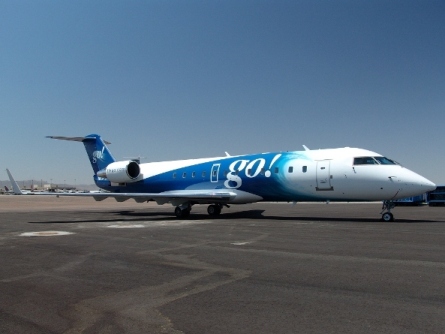Mokulele's move into inter-island Hawaiian flying in late 2008 has again disrupted the competitive balance in a market that's proven its inability to handle three carriers vying for a historically price-sensitive market share.
After Aloha Airlines filed for Chapter 11 bankruptcy protection and ceased operations in April 2008 Hawaiian Airlines stepped in to fill some of the void, but its CEO Mark Dunkerley explains the carrier had no desire to completely fill the gap as too much capacity existed in those markets prior to Aloha's exit.
Hawaiian and upstart go! Airlines remained competitors once Aloha disappeared, and with a 19% drop in interisland capacity during the first through fourth quaters of 2008, Dunkerley notes there was some rationality in the region's supply.
The landscape changed when Mokulele partnered in November of last year with US regional operator Republic Airways Holdings for the operation of four Embraer E-170s on interisland operations, starting with two aircraft.
Mokulele's entrance into the market has intensified competition a bit, says Dunkerley, but not a great deal. He characterizes Mokulele as a small player that "ran into financial difficulties early on".
Along with forging an air services agreement with Mokulele, Republic supplied the carrier an $8 million line of credit that's been fully drawn. Last month Mokulele escaped defaulting on a $300,000 payment to Republic after employees agreed to defer wages allowing the Hawaiian carrier to pay its new partner.
Comparing the three-player Hawaiian interisland market to a poker game Hamlin Transportation President George Hamlin says ultimately it is about "who can avoid losing the most short-term liquidity until the third carrier goes away".
Yet none of those carriers appear ready to fold their hands. Hawaiian remains confident in its interisland business and its staying power in the market, says Dunkerley. The parent of go! Mesa Air Group recently renegotiated new agreements with bond holders to avoid hefty payments due in February.
| |||||
|---|---|---|---|---|---|
|
|
With those negotiations concluded Mesa CEO Jonathan Ornstein says go! is going to stick with the interisland market. go! turned its first profit since its 2006 launch during Mesa's fiscal first quarter, netting $500,000 million in net income on $11.6 million of revenue.
Even struggling Mokulele's new partner believes the possibility exists for an improvement in fortunes if certain partnerships come to fruition. Republic CEO Bryan Bedford recently said Mokulele is working to forge relationships with both mainline and Asia-Pacific carriers. "Those relationships, those interline agreements, frequent flyer agreements and codeshare agreements should start producing revenue in the April timeframe," he explains.
As those agreements are running three months behind and creating a lag in revenue Mokulele is seeing some liquidity pressure, notes Bedford, who says Republic cannot speculate on how Mokulele might ease that strain.
"We are obviously, if we have to, we are going to become a lot more intimate with what it means to be a Hawaiian airline," Bedford explains. "We're not there yet and that certainly wasn't the intent when we went into the relationship with these guys."
Mokulele's questionable liquidity is occurring in parallel with fare undercutting by the carrier as Dunkerley highlights $27 fares in the marketplace. Ornstein, the head of go! parent Mesa cites $20 drop in the carrier's average fares from $60 to the high $40s. Ironically, Aloha a year ago blamed a fare war initiated by go! as a major reason for its demise. "Price is a weapon everybody understands," notes Hamlin.
Dunkerley recently highlighted that "contrary to initial public pronouncements" by Mokulele the carrier has initiated several rounds of fare discounting in an "effort to eke out a place for itself in the market".
Clearly there is little need for three carriers in the inter-island market, says Hamlin. Hawaiian's Dunkerley points to lower traffic in the region in the later part of 2008, reflecting the softening economy and lower tourism numbers.
With Hawaiian having by far the strongest presence in the region Hamlin says the tougher question to answer is which of the two smaller carriers will fall by the wayside.
Source: Airline Business




















